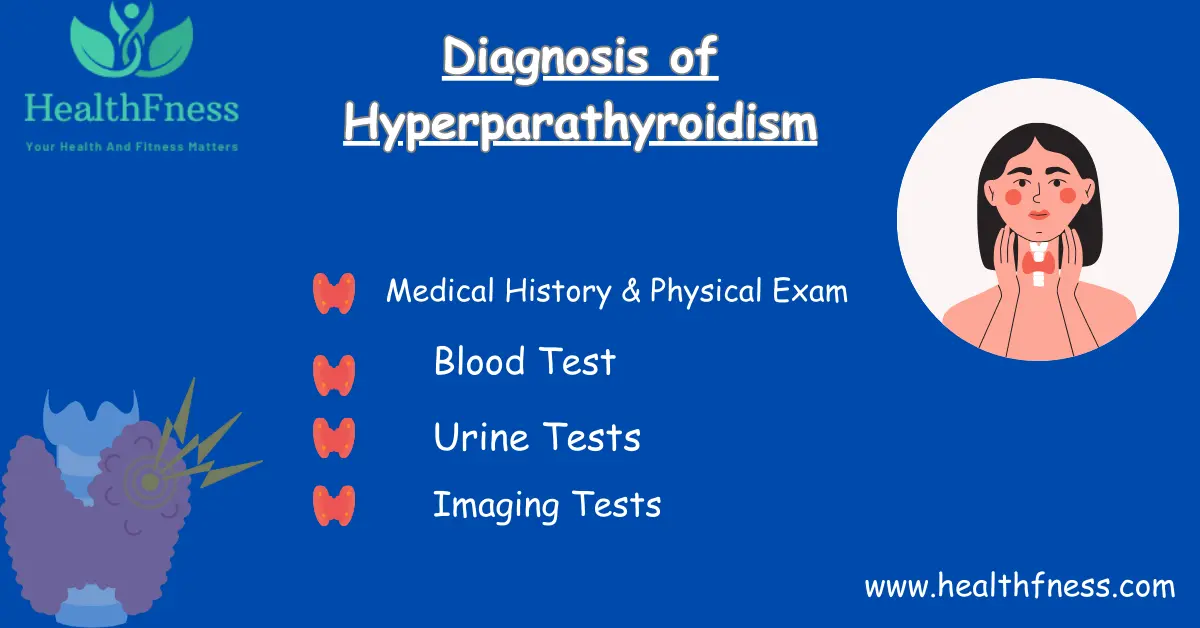Before exploring Hyperparathyroidism ICD 10 needs to know what is Hyperparathyroidism in general.
What is Hyperparathyroidism?
Hyperparathyroidism is a medical illness in which the parathyroid glands in the neck create an excessive amount of parathyroid hormone (PTH). This hormone is responsible for controlling calcium and phosphorus levels in the body. Excess PTH production can result in an excess of calcium in the blood, which can cause a number of health problems such as kidney stones, osteoporosis, and digestive disorders🤮.
Research work on Hyperparathyroidism ICD 10
Hyperparathyroidism is a medical disorder that is coded as E21.0 in the International Classification of Diseases, 10th revision (ICD-10). This number is used to indicate primary hyperparathyroidism, which is caused by a parathyroid gland malfunction. Secondary hyperparathyroidism is classed differently since it is caused by another medical issue, such as kidney disease (E21.2).
What is Hyperparathyroidism ICD 10
Hyperparathyroidism ICD 10 The International Association of Diseases, 10th Revision (ICD-10) classification code used to describe cases of hyperparathyroidism is ICD 10. ICD 10 is just a coding system that gives different diseases to identify them.
Importance of ICD-10 coding for hyperparathyroidism
ICD-10 coding for hyperparathyroidism is beneficial for a number of reasons:
Correct diagnosis: If untreated, hyperparathyroidism can have major health repercussions. The use of ICD-10 coding to correctly diagnose and identify a problem allows healthcare practitioners to provide fast and appropriate treatment.
Billing and reimbursement: Healthcare providers bill insurance companies for their services using ICD-10 numbers. Hyperparathyroidism coding must be accurate in order for claims to be processed appropriately and for providers to be compensated for their services.
Public health surveillance: Correct coding of hyperparathyroidism assists public health workers in tracking the disease’s incidence and prevalence. This data is utilized to spot patterns, allocate resources, and create public health policy.😯
Research: ICD-10 codes are used in studies to find hyperparathyroidism cases and collect data that helps in treatments.
You May Also Like to Read: Understanding of Menopause ICD 10: How ICD-10 Helps with Diagnosis and Treatment
ICD 10 code for hyperparathyroidism
Hyperparathyroidism is a disorder affecting the parathyroid glands. There are two distinct codes for hyperparathyroidism in the International Classification of Diseases, 10th Edition (ICD-10): E21.0 and E21.2.
E21.0 – Primary hyperparathyroidism ICD 10
Symptoms of primary hyperparathyroidism are identified using the ICD-10 code E21.0. Primary hyperparathyroidism is caused by a problem with the parathyroid gland, which results in an abundance of PTH production. This causes an increase in calcium levels in the blood.
E21.2 – Secondary hyperparathyroidism ICD 10
The ICD 10 code for Secondary hyperparathyroidism is E21.2. Secondary hyperparathyroidism is caused by an underlying medical problem, such as kidney disease or a deficiency of vitamin D, which results in a calcium deficit in the blood.
Causes of Hyperparathyroidism ICD 10
Before treatment of any illness, an individual should know the reason behind the disease. Here are some of the most common causes of hyperparathyroidism:
Primary Hyperparathyroidism Causes
This condition is caused by a malfunction inside the parathyroid glands, resulting in an overproduction of PTH. A benign tumor (parathyroid adenoma) on one of the parathyroid glands is the most prevalent cause of primary hyperparathyroidism.
Secondary Hyperparathyroidism Causes
Secondary hyperparathyroidism is caused by a medical disease that causes a calcium deficit in the blood. This causes the parathyroid glands to overproduce PTH in an attempt to raise calcium levels which causes many diseases. The following are some of the most common causes of secondary hyperparathyroidism:
Chronic kidney disease: People with kidney disorders are unable to remove excess phosphorus from their bodies, resulting in low calcium levels and excess PTH.
Vitamin D deficiency: A lack of vitamin D is crucial for calcium absorption and metabolism. A vitamin D insufficiency can result in low calcium levels and subsequent PTH overproduction.
Malabsorption syndromes: Some disorders, such as celiac disease, bowel inflammation, or pancreatic insufficiency, can interfere with nutritional absorption, including calcium and vitamin D, resulting in secondary hyperparathyroidism.
Tertiary Hyperparathyroidism
Tertiary hyperparathyroidism is a condition that can develop in patients who have had secondary hyperparathyroidism for a long time. It is distinguished by the parathyroid glands’ autonomous overproduction of PTH, even after the underlying cause of secondary hyperparathyroidism has been treated.
You May Also Like to Read: Chronic Pancreatitis ICD 10: Types, Causes and Prevention
Symptoms of Hyperparathyroidism ICD 10
Following are some of the most prevalent symptoms of hyperparathyroidism:
Primary Hyperparathyroidism Symptoms
Primary Hyperparathyroidism Symptoms include Osteoporosis or osteopenia (bone loss), Kidney stones or urinary tract, infections, abdominal pain, Fatigue and weakness, Depression or anxiety, Muscle weakness or cramps, Loss of appetite or nausea, Constipation.
Secondary Hyperparathyroidism Symptoms
Primary Hyperparathyroidism Symptoms include weakness and fatigue, Muscle cramps and spasms, Numbness or tingling in hands, feet, or face, Bone pain or fractures, Loss of appetite or weight loss, Dry, itchy skin, Poor memory or concentration, and increased urination or thirst.
Diagnosis of Hyperparathyroidism
Diagnosis of hyperparathyroidism typically involves a combination of:
Medical History and Physical Exam: Your doctor or nurse will normally ask about your symptoms, medical history, and current medications. A physical examination will also be performed to look for symptoms of hyperparathyroidism.
Blood Test: Blood tests also help in diagnosis they can be used to identify calcium, phosphorus, and PTH levels in the blood. Calcium levels are often raised in primary hyperparathyroidism, whereas phosphorus levels are lowered and PTH levels are elevated.

Urine Tests: Urine tests are also helpful in the diagnosis of hyperparathyroidism urine tests can help determine the cause of kidney stones and other diseases.
Imaging Tests: Imaging techniques, such as ultrasound, CT scan, or MRI, can be used to discover tumors or other irregularities in the parathyroid glands.
Treatment of Hyperparathyroidism
Here are some common treatment options for hyperparathyroidism:
Observation and Lifestyle Changes
If your hyperparathyroidism is mild or asymptomatic, your healthcare provider may advise you to monitor your calcium and PTH levels on a regular basis, as well as make lifestyle changes such as increasing fluid intake, reducing salt and caffeine, and getting regular exercise.
Medicines
Medications can be used to assist prevent bone loss and lower calcium levels in the blood. Bisphosphonates, calcimimetics, and estrogen replacement therapy are all common drugs.
Surgery
Surgery may be required to remove any aberrant parathyroid tissue. This is often used to treat original hyperparathyroidism or severe secondary hyperparathyroidism. Under general anesthesia, surgery is frequently performed to remove the afflicted gland through a tiny incision in the neck (s).
Complication Treatment
If hyperparathyroidism has resulted in problems such as kidney stones, bone loss, or fractures, further treatments may be required to manage these conditions. Medication, dietary changes, or physical therapy may be used.
FAQS
What is Hyperparathyroidism, and how is it coded in ICD 10?
Hyperparathyroidism is a condition characterized by means of immoderate secretion of parathyroid hormone. In ICD 10, it's miles coded below E21.Zero for number one hyperparathyroidism and E21.Three for secondary hyperparathyroidism.
What are the common symptoms of Hyperparathyroidism?
Common symptoms and symptoms include fatigue, weak point, bone ache, kidney stones, and gastrointestinal issues. However, a few individuals might not display off any signs.
How important is accurate ICD 10 coding for Hyperparathyroidism diagnosis?
Accurate coding in ICD 10 ensures proper documentation of the condition, facilitating accurate diagnosis, treatment planning, and tracking of outcomes.
What are the challenges associated with using ICD 10 codes for Hyperparathyroidism?
Challenges may include code specificity, coding updates, and ensuring consistency in documentation across healthcare settings.
What treatment options are available for managing Hyperparathyroidism?
Treatment may additionally include remedy to alter calcium levels, surgical removal of the affected parathyroid gland, or other interventions depending at the underlying motive and severity of the situation.
What hyperparathyroidism means?
Hyperparathyroidism is a medical condition in which the parathyroid glands produce too much parathyroid hormone (PTH). The parathyroid glands are small glands located in the neck that regulate calcium and phosphorus levels in the body.
What is the ICD 10 code for secondary hyperparathyroidism?
The ICD-10 code for secondary hyperparathyroidism is E21.2. This code is used to indicate a diagnosis of hyperparathyroidism that is secondary.
What are the 3 types of hyperparathyroidism?
There are three types of hyperparathyroidism:
Primary Hyperparathyroidism, Secondary Hyperparathyroidism, and Tertiary Hyperparathyroidism.
Conclusion
Hyperparathyroidism is, in conclusion, a medical condition. Hyperparathyroidism is classified into three types: primary, secondary, and tertiary. Blood tests, imaging studies, and parathyroid gland biopsies are commonly used to make a diagnosis (s). Treatment options vary depending on the severity of the hyperparathyroidism and the underlying cause, but may include drugs and surgery to remove the afflicted gland (s).

